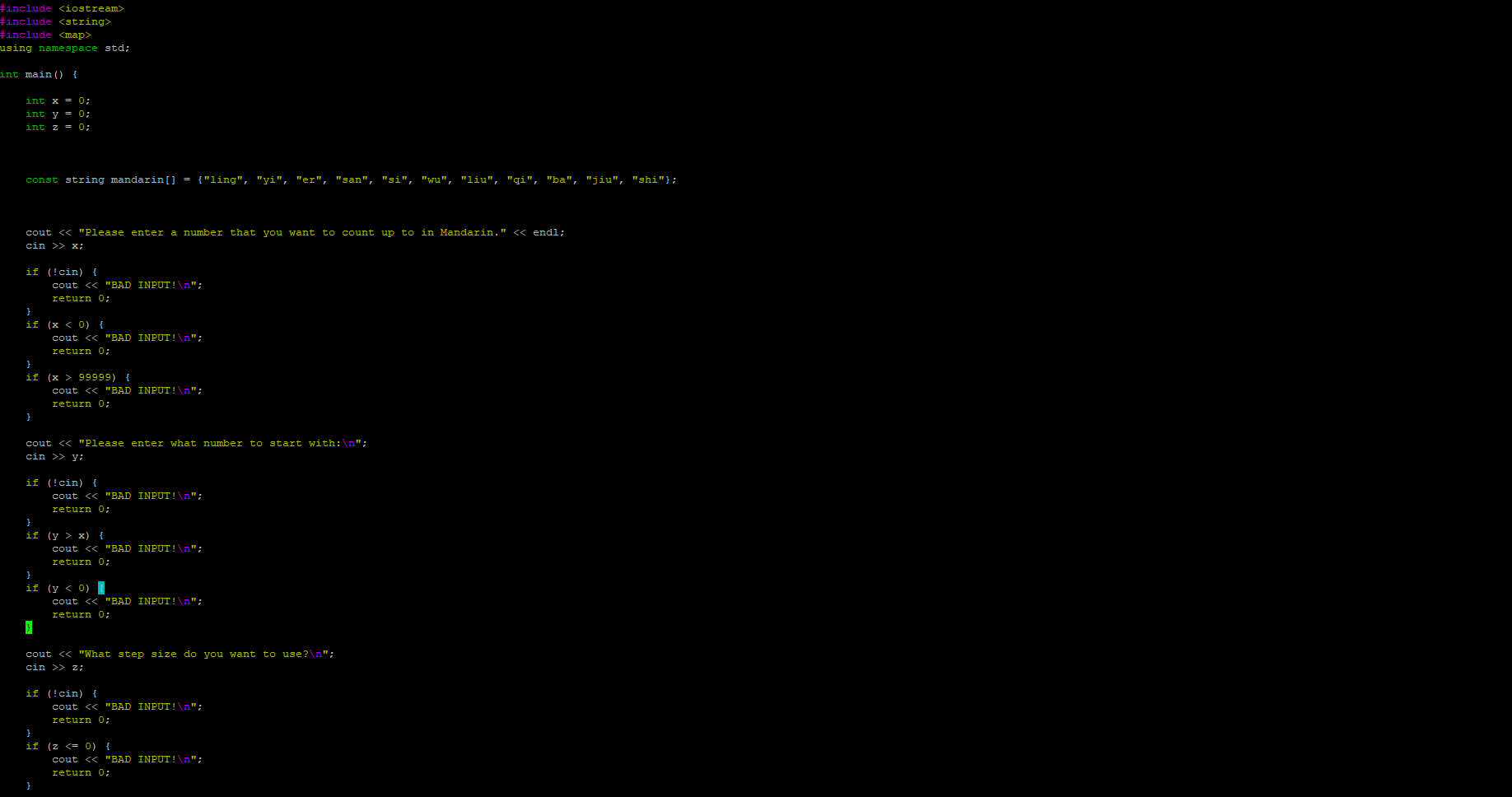Question
My CSCI 40 teacher made an assignment and I cant figure it out... He wants us to create a program that will transfer regular numbers
My CSCI 40 teacher made an assignment and I cant figure it out... He wants us to create a program that will transfer regular numbers into mandarin, he provided all the translations and explanations... We are using c++ to program... Ive posted screenshots of my code so far

Ask the user ----> Please enter a number that you want to count up to in Mandarin.
Ask the user ----> Please enter what number to start with:
Ask the user ---> What step size do you want to use?
input the users inputs
Your program should output the numbers in both Arabic numerals and in Mandarin.
For example, if you want to count to 10, starting at one, with a step size of two, your program will output this: 1 yi 3 san 5 wu 7 qi 9 jiu
We will not output anything past this, since the next number is over 10.
Mandarin Dictionary: 0 - ling 1 - yi 2 - er 3 - san 4 - si 5 - wu 6 - liu 7 - qi 8 - ba 9 - jiu 10 - shi
To count numbers over 10, use the following rules:
For numbers 11 through 19, it is shi followed by the digit above: 11 - shi yi 12 - shi er 13 - shi san etc.
For numbers 20 through 99, it is the first digit followed by shi followed by the second digit (except 0): 33 - san shi san 52 - wu shi er 80 - ba shi
For numbers over a hundred, it follows the same pattern. 167 in Mandarin is literally "1 hundreds, 6 tens, 7" or "yi bai liu shi qi". 420 in Mandarin is "4 hundreds 2 tens" or "si bai er shi". Same goes for thousands - 1234 is literally "one thousand 2 hundred three ten four" or "yi qian er bai san shi si". And so forth for wan (10,000s). Don't worry about digits over wan. 100 - bai 1000 - qian 10000 - wan
ERROR CHECKING: If the user ever makes an error on input, print "BAD INPUT!" to the screen and quit.
Types of errors: 1) Typing in something not an integer 2) Having the start be higher than the end 3) Having negative numbers 4) Having numbers over 99999 5) Having a step size of 0 or less
#includeStep by Step Solution
There are 3 Steps involved in it
Step: 1

Get Instant Access to Expert-Tailored Solutions
See step-by-step solutions with expert insights and AI powered tools for academic success
Step: 2

Step: 3

Ace Your Homework with AI
Get the answers you need in no time with our AI-driven, step-by-step assistance
Get Started


